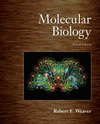

 Molecular Biology, 4/e DNA Replication I: Basic Mechanism and Enzymology DNA Replication Fork |
 2008 McGraw-Hill Higher Education
2008 McGraw-Hill Higher EducationAny use is subject to the Terms of Use and Privacy Policy.
McGraw-Hill Higher Education is one of the many fine businesses of The McGraw-Hill Companies.